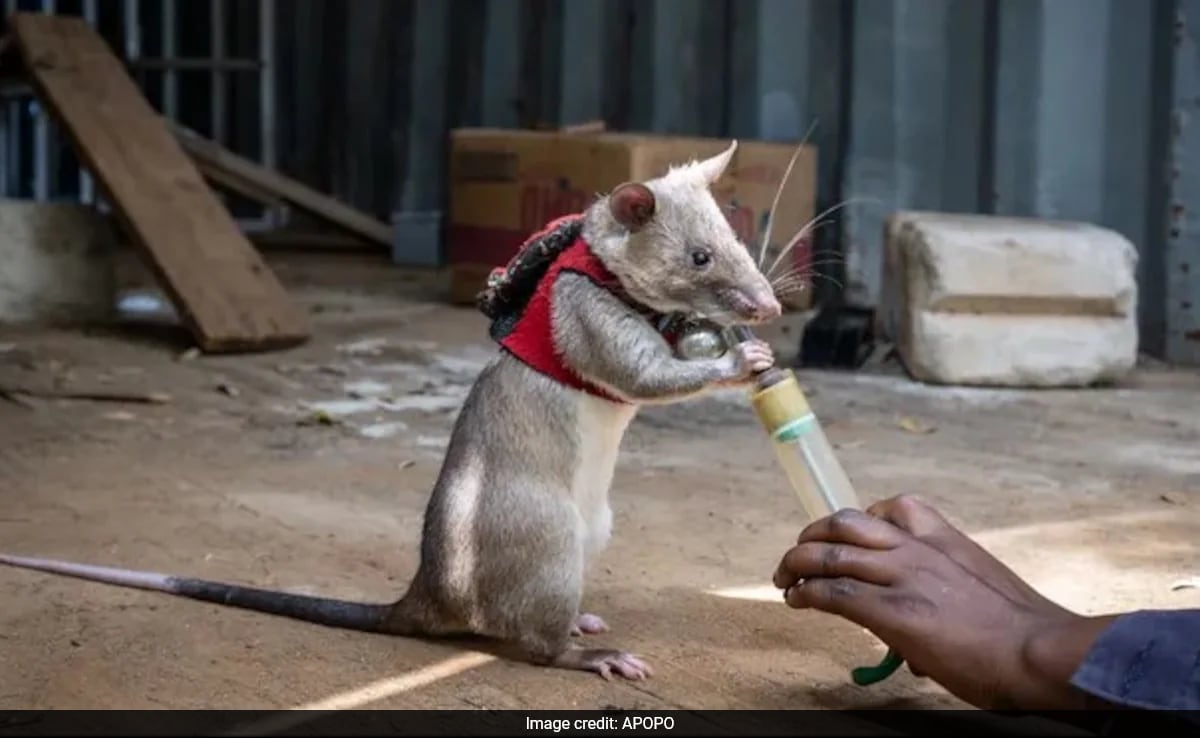Giant African rats that weigh 1.5-2 kg and are 3-4 times the size of brown rats can be used to fight illegal wildlife trafficking, according to a study published last month by nonprofit APOPO. Natives to the savannahs of southern Africa, these giant rats, also known as ‘hero rats’ by people who train them, have been used to detect deadly land mines and tuberculosis pathogens in samples. The scientists now believe they can be trained to identify illegally trafficked wildlife through scent detection.
The study, conducted in Morogoro, Tanzania in eastern Africa between December 2017 and December 2021, demonstrated that the giant rats successfully detected samples of elephant ivory, rhino horn, pangolin scales and African hardwood even when these wildlife products were mixed with non-target items.
“Scent-detection animals present an innovative approach to combatting illegal wildlife trade, as animals may be better suited to distinguish between organic materials and less susceptible to visual concealment methods,” read the study.
It noted that current methods to combat illegal wildlife trade and screen these shipping containers, such as X-ray scans, were expensive and time-consuming. According to a report in Discover Wildlife, it takes approximately $30,000 to train a dog while airport scanners can cost anywhere between $30,000 to $1.2 million. However, training a detection rat costs only $8,000.
Additionally, the rats are not picky about their handlers compared to dogs who often work with the same officer. As per senior research scientist Isabelle Szott, one of the co-authors of the study, the light weight of the giant rats also plays an “important aspect for wildlife product detection because we can lift rats to higher locations such as air ventilation systems of shipping containers”.
“They can go where dogs cannot, in other words,” she added.
Despite the success of the study, scientists said “further research is needed to establish deployment feasibility”. For outside tests, the rats will be required to wear custom-made vests that have a small ball in front, emitting a beeping sound. When a rat wishes to alert its handler about a suspected target, it will use its front paws to pull and sound the ball.
Also read | Our Big Brain May Not Be The Reason For Difficult Childbirth, New Study Claims
Illegal wildlife trade
The illegal wildlife trade is considered the fourth largest transnational crime economy, estimated to be worth between $7-23 billion dollars and is linked closely to crimes such as money laundering, corruption and trafficking of drugs, weapons and/or humans.
Additionally, the spread of zoonotic diseases is usually linked to the unregulated illegal trade of species across countries exacerbating public health emergencies such as the novel coronavirus pandemic.







